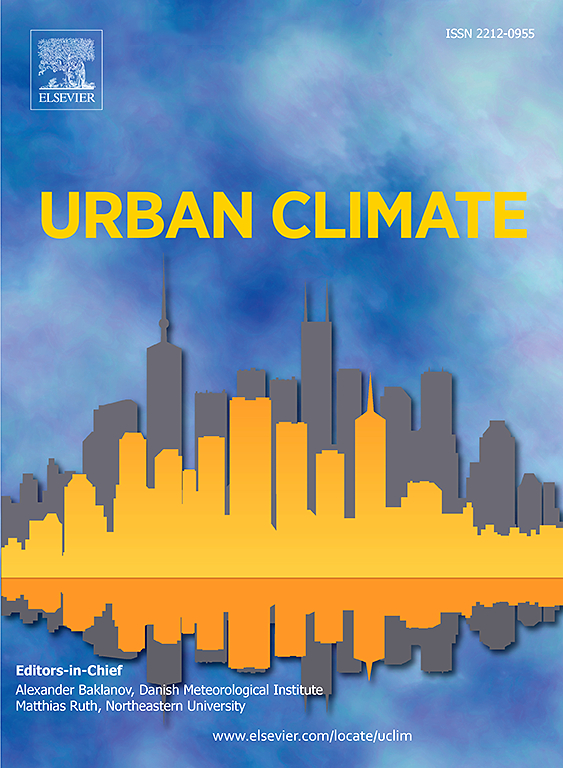The effects of urban morphology in a city with a tropical continental climate in the context of heat islands
IF 6
2区 工程技术
Q1 ENVIRONMENTAL SCIENCES
引用次数: 0
Abstract
Based on the relevance of considering climate change in urban centers, especially in tropical cities affected by extreme events such as heat waves and droughts, such as Cuiabá-MT-Brazil, the aim of this research was to simulate future UHI scenarios and assess the impact of possible changes in urban morphology on micro-scale warming. The results showed that, in terms of microclimate, during the period from 2011 to 2020, urban areas with an urban canyon configuration are those that favor the intensification of the heat island more expressively in the hot-dry period. On the other hand, regions characterized by low-rise buildings in a compact arrangement expressed a cooling island during the winter, spring and summer, ranging from −0.013 °C to −0.53 °C. In addition, the regions identified as having dense tree vegetation stand out as true oases, as they have milder temperatures in all seasons throughout the period studied. As far as the prognosis is concerned, the worst UHI scenarios are observed in the probable transformation of dense tree vegetation into built-up areas, with up to 2.25 °C in winter, up to 1.80 °C in spring and up to 0.95 °C in summer. Estimated and equally relevant changes are observed when switching from low-rise typologies to high SVF and low H/W urban canyon typologies (LCZ2 and 5) and low SVF and high H/W urban canyons (LCZ 4), causing local warming in fall of up to 2.77 °C, winter of up to 1.88 °C, spring of up to 1.37 °C and summer of up to 1 °C.
热岛背景下热带大陆气候对城市形态的影响
基于考虑城市中心气候变化的相关性,特别是在受热浪和干旱等极端事件影响的热带城市,如Cuiabá-MT-Brazil,本研究的目的是模拟未来城市热岛情景,并评估城市形态可能变化对微尺度变暖的影响。结果表明:在2011 - 2020年的小气候上,城市峡谷型的城市区域在干热期更有利于热岛的强化;另一方面,低层建筑密集分布的区域在冬季、春季和夏季表现出一个冷却岛,温度范围从- 0.013°C到- 0.53°C。此外,被确定为拥有茂密植被的地区是真正的绿洲,因为在整个研究期间,它们在所有季节都具有较温和的温度。就预测而言,在密集乔木植被可能转变为建成区时,观察到最坏的热岛情景,冬季最高可达2.25℃,春季最高可达1.80℃,夏季最高可达0.95℃。当从低层类型切换到高SVF和低H/W的城市峡谷类型(LCZ2和5)以及低SVF和高H/W的城市峡谷类型(LCZ 4)时,观测到估计的和同样相关的变化,导致局部增温在秋季高达2.77°C,冬季高达1.88°C,春季高达1.37°C,夏季高达1°C。
本文章由计算机程序翻译,如有差异,请以英文原文为准。
求助全文
约1分钟内获得全文
求助全文
来源期刊

Urban Climate
Social Sciences-Urban Studies
CiteScore
9.70
自引率
9.40%
发文量
286
期刊介绍:
Urban Climate serves the scientific and decision making communities with the publication of research on theory, science and applications relevant to understanding urban climatic conditions and change in relation to their geography and to demographic, socioeconomic, institutional, technological and environmental dynamics and global change. Targeted towards both disciplinary and interdisciplinary audiences, this journal publishes original research papers, comprehensive review articles, book reviews, and short communications on topics including, but not limited to, the following:
Urban meteorology and climate[...]
Urban environmental pollution[...]
Adaptation to global change[...]
Urban economic and social issues[...]
Research Approaches[...]
 求助内容:
求助内容: 应助结果提醒方式:
应助结果提醒方式:


